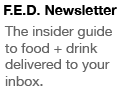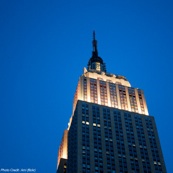Kyo ya, Kyo Ya, Chef Chikara Sono, New York, East Village, Japanese, Recommended, Sushi, Kaiseki, Chef Recommended, Where to eat Japanese in New York, Top Japanese restaurants in New York, Manhattan, Traditional Japanese, Sake, 10009

Who
Executive chef of Kyo ya in New York’s East Village.
Why
Kyo ya’s beautiful zen-like ambiance, authentic multi-course kaiseki and tip top service has gained them a hard core loyal following and a Michelin star three years in a row.
Q & A WITH CHEF CHIKARA SONO

Q. Congratulations on another Michelin star.
A. Your warm words are appreciated. Kyo ya is proud of being a single-star Japanese restaurant for three consecutive years.
Q. What do you think is it about Kyo ya that separates you from other restaurants and so many chefs recommend you?
A. Kyo ya believes that its strong and constant pursuit to offer ‘genuine’ Japanese cuisine based on selected ingredients has been making it spectacular among other Japanese restaurants.
Our kaiseki shows the biggest difference in authenticity of Japanese taste when you compare it with similar ‘fusion’ kaiseki, which are increasingly spreading in the market.
It is a welcoming situation that more and more chefs are mastering the Japanese cooking technique, especially the soup stock method so called dashi, but in fact a lot of chefs are referring to Kyo ya’s dashi and other cooking techniques in developing their fusion style. It seems just like ‘going back to the master piece’ in the art school.
In addition, Kyo ya feels from its guests response that it is not only the food and taste, but also the hospitality that contributes to the high score. Actually, Kyo ya considers that hospitality is the most important element in dining experience.
Q. You serve a nightly kaiseki, can you explain the art of the kaiseki?
A. The art of kaiseki is making the sophisticated balance between the seasonality and the taste. Even in just one plate, it contains hashiri an ingredient which has just started in the season, shun the best ingredient in the season, and nagori an ingredient which is almost saying farewell to the season.
Kaiseki is the art of harmony of such three different seasonal ingredients. Seasonal fresh vegetables and fish are the main players in the courses and some fruits and small portions of meat add accents to the taste to keep the guests ‘passionate’ during each course.
Chef Chikara Sono | Kyo Ya
November 18, 2010


East Village
Japanese
94 East 7th Street
New York, NY 10009
T: 212.982.4140
Hours:
Tue - Sat: 5:30pm - 11:30pm
Sun: 5:30pm - 10:30pm



East Village - New York, NY
Recommended By
- Anita Lo - chef / owner annisa
- Hiromitsu Takahashi - soba master / owner Sobakoh
- Mari Tuttle - owner Mari’s Brownies
- Reika Yo Alexander - owner En Japanese Brasserie
Recommendations
Chef Chikara Sono’s recommendations for where to eat and shop in New York, Brooklyn, and Japan.










Q & A







Recommendations

Find | Ingredients
Starch & Flour Made From Different Grain
Those are Kuzu (Kuzu Starch), Shiratamako (Rice Flour), Jyoshinko (top-grade rice flour made from non-glutinous rice), Mochiko (Sweet Rice), flour and so on. For example, the sesame tofu, which is one of the Kyo ya’s signature dishes, is impossible to make without Kuzu Starch.
[See details.]
Find | Kitchen Tools
Moribashi | Japanese Cooking Chopsticks
Needless to say about the Japanese cooking knife, but there is another indispensable tool in the kitchen. It is called Moribashi.
They are the special chopsticks for cooking, which are half made of wood and half made of stainless steel.
The chef holds the wood part and with the stainless steel part, picks up and places all kinds of small food on the plate, and finishes the décor of kaiseki appearance.
For me, Moribashi is just like a special brush for a painter.
[See details.]
Eat | Japanese Restaurants & Chefs
Modern Approach To Japanese
Hiroki Abe at EN Japanese Brasserie & Koji Hagihara at Hakata Tonton
Both create the greatest modern approach to Japanese cuisine. Every time I try their dishes, they surprise me and I enjoy it.
Traditional Japanese Cuisine
Hitoshi Kagawa at Donguri
He’s the most respectable person for me -- he has great skills and techniques.
Yukihiro Sato at Hakubai
He’s also one of the greatest Japanese chefs. Both of them are serving high quality traditional Japanese cuisine constantly.
Tomoko Kato at Cha-An Japanese Tea House
And I can’t forget about Tomoko, who is a wonderful chef and also a well-known pâtissier. Her Green Tea Roll Cake with Sake Ice Cream is the best.
Soba Noodles | Sobakoh
It’s my favorite soba noodle place and I have to have Inaka Soba.
Sushi | 15 East
I love to sit at the chef’s counter.
Ramen Noodles | Rockmeisha
The Tonkotsu Ramen Noodle is a must.
Home Style Japanese | Chiyono
The intimate restaurant serves Japanese home style cooking. They have the special of specials; the awesome Japanese Curry, one of my favorites of home cooking. They serve it only after midnight, Friday through Sunday.
Off The Beaten Track | Go Japanese
My favorite after work spot... only after 1am. Mr. Itsuki Nagai cooks Traditional Japanese Tapas. With my favorite Ohzeki One Cup Sake, it makes for a blissful moment.
When Not At Your Own Restaurant | George Mendes at Aldea
I always enjoy it. The Chef’s Tasting Menu created by the genius chef is spectacular!
[See details.]
Chef’s New york City Recs

Find | Japanese Markets
Where To Buy Japanese Ingredients | Sunrise Mart
In the East Village, Soho, and Midtown, they are great places to buy Japanese ingredients. They always carry enormous varieties and high qualities of items that are convenient for me to shop. It’s a treasure box for me and I can easily spend 30 minutes or more there. I just forget about time and enjoy little Japan.
[See details.]
Drink | Japanese Beverages

Milk
The milk from the farm in Hokkaido is the only real milk!
Beer | Sapporo Draft Beer & Asahi Super Dry Draft Beer
Shochu | Torikai, Kome
It’s distilled from rice and is my favorite shochu.
Sake | Koshino-Kanbai Muku
It’s a Junmai Daiginjyo -- it’s well balanced and goes well with any Kyo Ya’s dishes.
[See details.]
Recipes

- Fluke Marinated with Kombu (Kelp) and Liver Sauce
Recommendations

Details of Chef Chikara Sono’s recommendations for where to eat and shop in New York, Brooklyn, and Japan.
City Guides

- New York City | Manhattan: Download
- New York City | Brooklyn: Download
Drink
Where To Drink Shochu & Sake
Two places I can recommend are bozu in Brooklyn and Bohemian in Noho.
[See details.]
Chef’s Japan Recs

Eat | Restaurants
Sapporo | Furusato
It’s located in Sapporo, Hokkaido (which is my hometown). It’s my neighborhood izakaya restaurant. It’s also the most busy and famous spot in the town. Go for the daily special -- all the dishes are cooked simple and they use great local ingredients.
Tokyo | Shunkoutei
Try the rice in omelet with seasonal ingredients -- located in Akasaka in Tokyo. It’s unforgettable.
[See details.]


















